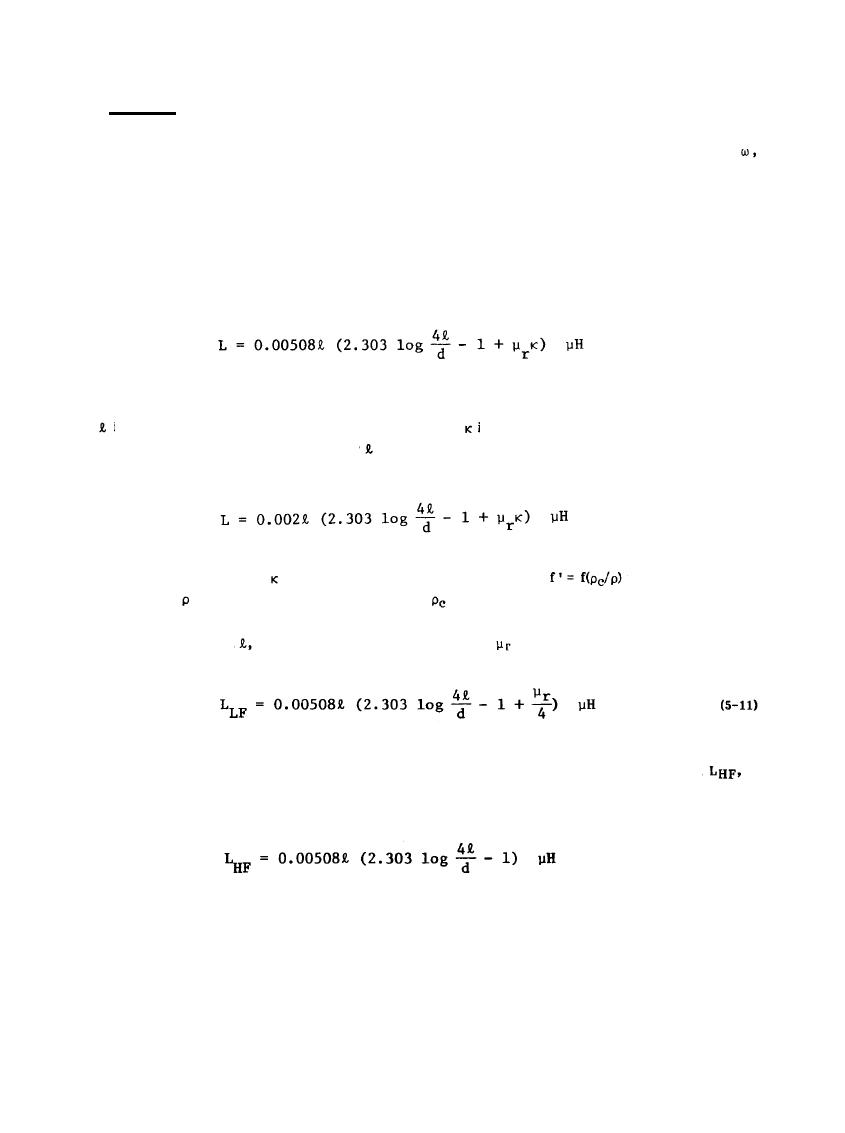

Custom Search
|
|

|
||
 MIL-HDBK-419A
5.2.2.3 Reactance.
The reactance of the conductor is generally inductive and is given by the product of the radian frequency,
and the self-inductance, L, of the conductor. The self-inductance of a conductor is a measure of that property
which causes an opposition to a change in the current flowing in the conductor. Because skin effect
redistributes the current within a conductor with changes in frequency, the inductance of the conductor does
vary with frequency.
The self-inductance of a straight round wire is given (5-6) by
(5-9)
where
is the length in inches, d is the diameter in inches, and
is a skin effect correction factor which may
be determined (for copper) from Figure 5-3. For
and d in centimeters, Equation 5-9 becomes
(5-10)
For materials other than copper,
can be obtained from Figure 5-3 by using
instead of the actual
frequency f, where
is the resistivity of the material and
is the resistivity of copper. For low frequencies
where the current flow can be assumed to be uniform across the conductor cross-section, the inductance of a
round straight wire of length
diameter d, and relative permeability
(if surrounded by air) is
where all the dimensions are in inches. As the frequency increases, a limiting value of inductance,
is
approached:
(5-12)
5-7
|
 
|
|
 |
||